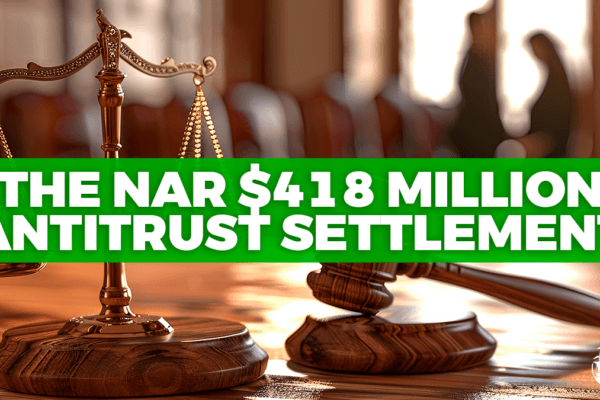Use Your IRS Tax Refund to Secure a Mortgage
When tax season rolls around, many individuals eagerly anticipate receiving their IRS tax refund. This annual financial boost can serve as a significant resource, offering a unique opportunity to enhance one’s financial situation. One particularly savvy way to utilize this windfall is by channeling it towards securing a mortgage. This approach can not only help in purchasing a new home but also improve the terms of an existing mortgage, making it a strategic financial move.
Using your tax refund for a mortgage can help in several ways. Firstly, it can be applied as a down payment, potentially reducing the overall amount borrowed and thereby lowering monthly mortgage payments. Additionally, a larger down payment can often result in better loan terms, such as a lower interest rate, which can save thousands of dollars over the life of the loan. For those already owning a home, the tax refund could be used to make extra payments on the mortgage principal, reducing the loan balance faster and saving on interest payments.
In this blog post, we will delve deeper into the various aspects of using an IRS tax refund to secure and optimize a mortgage. We will explore the benefits of applying a tax refund to a down payment, discuss how it can improve loan terms, and examine strategies for using a refund to pay down existing mortgage debt. By the end of this post, you will have a comprehensive understanding of how to leverage your tax refund to fortify your financial standing through smart mortgage management. Stay tuned as we break down these concepts and provide actionable insights to help you make the most of your tax refund.
Understanding Your IRS Tax Refund
An IRS tax refund is essentially the amount of money returned to a taxpayer when their tax liability is less than the taxes they paid throughout the year. This overpayment can occur due to various factors, including excessive tax withholdings, deductions, and credits. The IRS calculates your tax refund based on the information provided in your tax return, ensuring that any overpaid amounts are accurately refunded to you.
Tax withholdings play a significant role in determining whether you receive a refund. Throughout the year, employers withhold a portion of your paycheck to cover your estimated federal income tax liability. If the withheld amount exceeds your actual tax liability calculated at the end of the year, you are entitled to a refund. On the other hand, if your withholdings fall short, you may owe additional taxes.
Deductions and credits are crucial components that can increase your chances of receiving an IRS tax refund. Deductions reduce your taxable income, thereby lowering your overall tax liability. Common deductions include those for mortgage interest, charitable contributions, and medical expenses. Tax credits, such as the Earned Income Tax Credit (EITC) and Child Tax Credit (CTC), directly reduce the amount of tax you owe, potentially resulting in a refund if these credits exceed your tax liability.
Typically, the average tax refund amount varies each year based on changes in tax laws and economic conditions. According to the IRS, the average refund in recent years has ranged from $2,800 to $3,000. Refunds are generally issued within 21 days of the IRS receiving your tax return, provided there are no errors or additional reviews required. The timing can vary based on how you file your return (electronically or by mail) and whether you opt for direct deposit or a paper check.
Understanding the mechanics of an IRS tax refund can help you better manage your finances and leverage any potential refunds to support significant financial goals, such as securing a mortgage.
The Benefits of Using Your Tax Refund for a Mortgage
Utilizing your IRS tax refund to secure a mortgage comes with numerous advantages that can significantly enhance your home-buying experience. One of the primary benefits is the reduction in down payment burden. A sizable tax refund can cover a substantial portion of the down payment, making homeownership more attainable. For instance, if you receive a $5,000 tax refund, this amount can be directly applied to the down payment, reducing the initial financial strain.
Another significant advantage is the potential to lower mortgage interest rates. Lenders often provide better interest rates to borrowers who can make larger down payments. This is because a higher down payment reduces the lender’s risk, leading to more favorable loan terms for the borrower. By using your tax refund to increase your down payment, you may qualify for a lower interest rate, which can save you thousands of dollars over the life of the loan.
Additionally, applying your tax refund towards a mortgage can improve your chances of loan approval. Lenders consider several factors when approving mortgage applications, including the applicant’s financial stability and ability to cover the down payment. A larger down payment, funded by your tax refund, can demonstrate financial responsibility and increase your appeal as a borrower. This can be particularly beneficial for first-time homebuyers or those with borderline credit scores.
Real-life examples and statistics further illustrate these points. According to the Federal Reserve, the average down payment for first-time homebuyers is about 6%, which can be a significant hurdle for many. However, with the average IRS tax refund amounting to approximately $2,800, applying this refund can cover nearly half of the required down payment for a $100,000 home. This practical application highlights how leveraging your tax refund can make a substantial difference in your home-buying journey.
In conclusion, using your tax refund to secure a mortgage offers tangible benefits, including easing the down payment burden, potentially lowering interest rates, and improving loan approval chances. These advantages make it a strategic financial decision for aspiring homeowners.
How to Apply Your Tax Refund to a Down Payment
Allocating your IRS tax refund towards a down payment on a mortgage is a strategic way to enhance your financial stability. To begin, proper preparation before receiving your tax refund is essential. Start by reviewing your financial situation, including your income, expenses, and credit score. This comprehensive assessment will help you understand how much you can realistically allocate towards a down payment.
Next, establish a budgeting plan. Create a detailed budget that accounts for your monthly expenses and potential savings. This plan should include setting aside a portion of your tax refund specifically for the down payment. By doing so, you ensure that the funds are earmarked and not diverted to other expenditures.
Once the tax refund is received, the actual process of applying these funds to your down payment begins. Research and select a mortgage lender that offers favorable terms and conditions. It is advisable to consult with multiple lenders to compare their offerings. During this phase, make sure to communicate your intention to use the tax refund for the down payment, as some lenders may have specific requirements or recommendations.
To facilitate the transfer of funds, utilize financial tools such as savings accounts or escrow accounts. These accounts can securely hold your tax refund until it is time to make the down payment. Additionally, some lenders may offer programs or services that streamline the process, making it easier to apply your funds directly towards the mortgage.
Practical advice includes maintaining meticulous records of all transactions and communications with lenders. This documentation can be invaluable in ensuring transparency and resolving any potential discrepancies. Moreover, working closely with a financial advisor or mortgage broker can provide additional insights and guidance, helping you navigate the complexities of securing a mortgage using your tax refund.
By following these steps, you can effectively leverage your IRS tax refund to make a significant contribution towards your mortgage down payment, paving the way for a more secure financial future.
Improving Your Mortgage Application with a Tax Refund
Using your IRS tax refund strategically can significantly bolster your mortgage application. One of the primary ways to do this is by improving your credit score. Lenders often assess your creditworthiness as a critical factor in mortgage approval. Allocating a portion of your tax refund to settle outstanding debts or pay down high-interest credit card balances can help boost your credit score. This, in turn, can make you a more attractive candidate to potential lenders.
Another effective use of your tax refund is to increase your savings. A robust savings account demonstrates financial stability, which is an appealing trait to mortgage lenders. By depositing your tax refund into a savings account or an emergency fund, you not only enhance your financial security but also show lenders that you have a safety net in place. This can be particularly advantageous when demonstrating your ability to manage future mortgage payments.
Reducing debt is another critical factor that can strengthen your mortgage application. High levels of debt can be a red flag for lenders, as it may indicate financial instability or difficulty in managing future mortgage payments. Using your tax refund to pay off existing debts can lower your debt-to-income ratio, a key metric lenders use to evaluate your financial health. A lower debt-to-income ratio suggests that you have more disposable income available to cover your mortgage payments, which can improve your chances of approval.
When presenting your tax refund during the mortgage application process, it’s crucial to document its impact clearly. Keep records of how the refund was used to pay off debts, increase savings, or improve your credit score. Providing detailed documentation can help convince lenders of your financial responsibility and readiness for a mortgage. By leveraging your tax refund wisely, you can significantly enhance your mortgage application and improve your chances of securing favorable loan terms.
Tax Refunds and Mortgage Types: Finding the Right Fit
When contemplating the use of your IRS tax refund to secure a mortgage, understanding the various types of mortgages available is crucial. Each mortgage type offers unique benefits and drawbacks, making it essential to align your choice with your financial circumstances and long-term goals.
Fixed-Rate Mortgages: Fixed-rate mortgages maintain the same interest rate throughout the loan term, providing stability and predictable monthly payments. This type of mortgage is ideal for individuals who prefer consistency and plan to stay in their home long-term. Using your tax refund as a down payment on a fixed-rate mortgage can help reduce the loan amount, potentially lowering your monthly payments and overall interest paid.
Adjustable-Rate Mortgages (ARMs): ARMs offer an initial period of lower, fixed interest rates followed by periodic adjustments based on market conditions. These mortgages can be appealing if you anticipate an increase in your income or plan to sell or refinance before the rate adjusts. Applying your tax refund to an ARM can mitigate future rate increases by allowing a larger initial down payment, thus reducing the principal balance.
FHA Loans: Federal Housing Administration (FHA) loans are designed for first-time homebuyers or those with less-than-perfect credit. They offer lower down payment requirements and more flexible credit criteria. Utilizing your tax refund for the down payment or closing costs on an FHA loan can make homeownership more accessible by minimizing upfront expenses.
VA Loans: Veterans Affairs (VA) loans are available to eligible veterans, active-duty service members, and certain members of the National Guard and Reserves. These loans often require no down payment and have favorable interest rates. While a tax refund is not necessary for a down payment, it can be used to cover other costs associated with securing a VA loan, such as funding fees or home improvements.
USDA Loans: The U.S. Department of Agriculture (USDA) offers loans for rural property buyers with no down payment requirements. These loans are income-restricted and cater to low-to-moderate-income households. A tax refund can be strategically used to cover closing costs or make home repairs, enhancing the property’s value and livability.
Choosing the right mortgage type depends on your financial situation, future plans, and willingness to manage potential rate fluctuations. By leveraging your IRS tax refund strategically, you can reduce initial costs, secure more favorable terms, and set a solid foundation for your homeownership journey.
Potential Pitfalls and How to Avoid Them
Utilizing your IRS tax refund to secure a mortgage can be a strategic financial decision. However, it is crucial to be aware of the potential pitfalls that could undermine this opportunity. One of the most common mistakes is overspending the tax refund. While it may be tempting to allocate a significant portion of the refund to immediate desires or non-essential expenses, doing so can diminish the amount available for your mortgage down payment or closing costs. To mitigate this risk, it is advisable to create a budget that prioritizes mortgage-related expenses and adheres strictly to it.
Another critical issue is the failure to consider the full costs of homeownership. Many prospective homeowners focus solely on the down payment and overlook other essential expenses such as property taxes, homeowners insurance, maintenance costs, and potential homeowners association (HOA) fees. This oversight can lead to financial strain once the home purchase is complete. To avoid this pitfall, conduct a comprehensive analysis of all potential costs associated with homeownership and ensure that your budget accounts for these ongoing expenses.
Additionally, neglecting to plan for future financial needs can have long-term repercussions. Homeownership is a significant financial commitment that extends beyond the initial purchase. Unexpected expenses, such as major repairs or medical emergencies, can arise at any time. Therefore, it is imperative to establish an emergency fund that can cover at least three to six months of living expenses. This financial cushion will provide peace of mind and safeguard against unforeseen financial challenges.
Practical strategies to avoid these pitfalls include seeking guidance from financial advisors and mortgage professionals. Their expertise can help you make informed decisions and develop a robust financial plan. Moreover, staying informed about current mortgage rates and market trends will enable you to optimize the use of your tax refund effectively. By taking these proactive measures, you can enhance your financial stability and successfully navigate the path to homeownership.
Conclusion and Next Steps
In summary, leveraging your IRS tax refund to secure a mortgage can be a strategic move towards achieving homeownership. Throughout this blog post, we have explored the various benefits of using your tax refund in this manner, from bolstering your down payment to reducing mortgage insurance premiums. It is clear that a well-timed tax refund can significantly enhance your financial position when applying for a mortgage.
As you consider this financial strategy, there are several actionable steps you can take to move forward. First, reach out to potential lenders to discuss your options and get pre-approved for a mortgage. This will give you a clearer picture of how much home you can afford and what loan terms may be available to you. Additionally, set realistic financial goals to ensure that you are not only prepared for the immediate costs associated with home buying but also for the long-term responsibilities of homeownership.
Professional financial advice can be invaluable during this process. A financial advisor can help you assess your overall financial health, create a sustainable budget, and identify the best use of your tax refund within your broader financial plan. They can also provide guidance on improving your credit score and managing any existing debt, which are critical factors in securing a favorable mortgage.
Finally, take this opportunity to motivate yourself towards achieving your dream of homeownership. The journey may seem daunting, but with careful planning and strategic use of your resources, such as your IRS tax refund, you can make significant progress. Use this time to educate yourself about the mortgage process, explore different loan options, and connect with professionals who can support you along the way.
By taking these steps, you are not only making a smart financial decision but also laying a strong foundation for your future as a homeowner. Embrace this opportunity, and take the next steps towards turning your homeownership dreams into reality.





